
| Leaf | 5.3g |
| Temperature | 205°F |
| Water | 155ml |
| Time | 30-45sec |
| Infusions | 6 |
I haven’t written about any tea recently, and wanted to write something for my site that no one will read. I would have opted for a nice fresh green shincha; but since its early in spring, those haven’t started shipping yet. Instead, I dug through my stock of tea packets to find something nice to drink. In a bin of samples I had gotten with other orders, I found a small brown packet labeled ‘Wild Lapsang Souchong 野生小种2021’ among many older green tea and puerh samples.

While its not a very spring-style tea, I haven’t had a lapsang souchong tea in a while, so I figured it was worth a try. I believe this is Wuyi Origin’s 2021 Wild Lapsang Souchong that was likely included with some Bai Mudan that I had ordered from them months ago. Over the years, I have tried a few different lapsang souchong teas, and some have not been super pleasant. I tend to like the ones with notes of fruit, but many are drown out by a smokiness that kind of ruins my experience. In a few cases, the smokiness has been very long lasting, and ruined the overall experience. Even some that have gotten better with later infusions have sometimes been ruined by the wash or first infusions. I believe that is not the standard people come to expect from this style; but my bad luck has dissuaded me from trying more in recent purchases.

The leaves were very typical of a smoke-dried tea. The leaf was mostly twisted, hard, tight black leaves. Looking closely, some gold and brown showed through the darkness, but only a small amount. Overall the tea was made up of mostly nice large leaves, even given it was stored in a tiny paper packet. There was a bit over 5g of tea in the packet, which was plenty for my 155ml gaiwan.
The scent of the dry leaf was somewhat typical for a dry black tea. Some very subtle notes of dried fruit, but not strong enough to say it is a “fruity” tea. Kind of a raisin scent, and maybe a bit like other dried citrus. There was a bit of a smokey scent, but not strong enough to scare me and remind me of the super smokey teas I’ve had in the past. The scent honestly was not the most pleasant to me, but wasn’t as bad as I would expect from a smoke-dried tea.

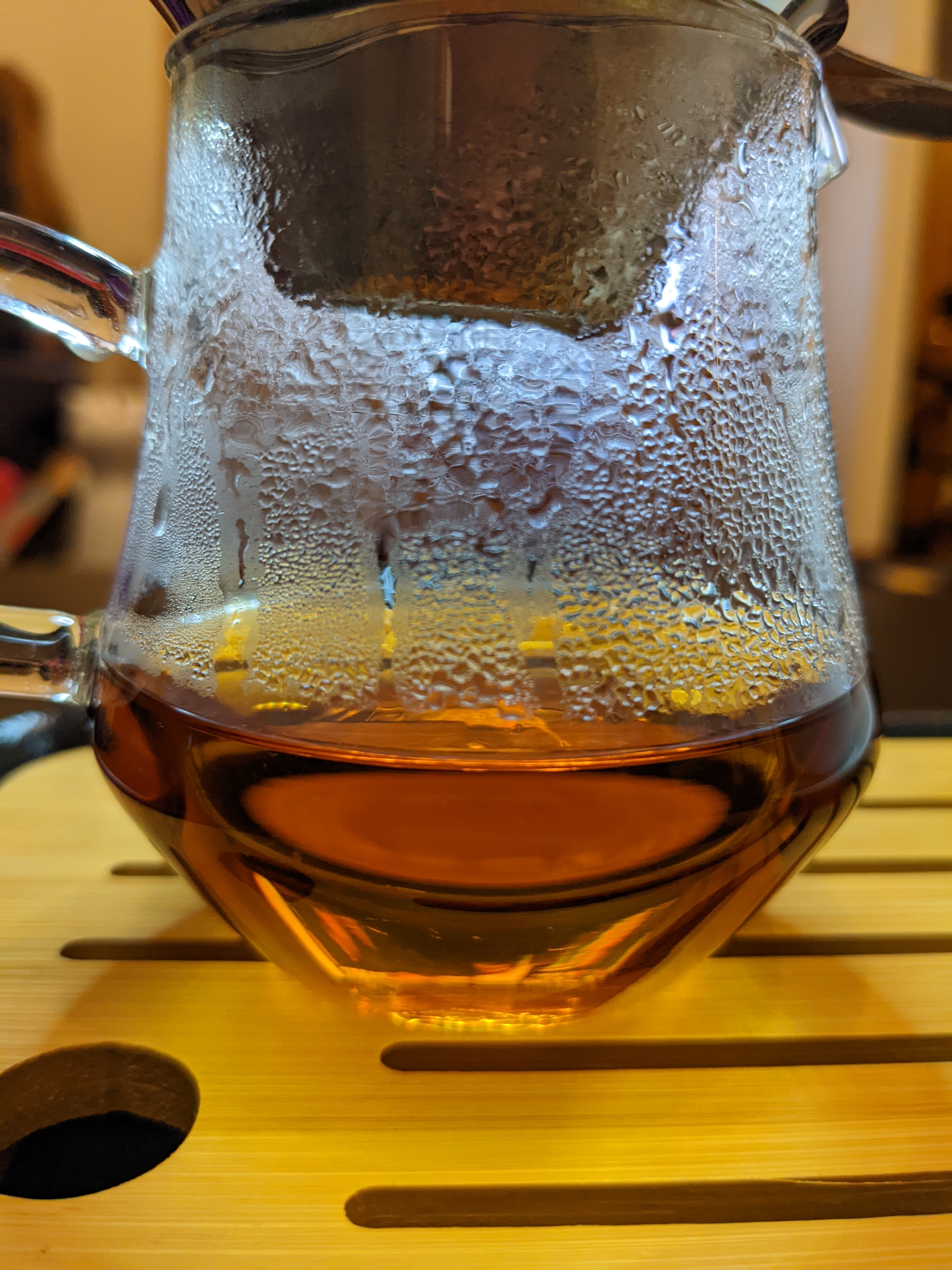
The liquor from the wash was a nice golden color, typical of many black teas and lapsang souchong teas. It definitely appeared thicker, and stickier than some washes I’ve done in the past; and it left bubbles/tea on the inside of the gaiwan. Maybe this is just a result of the more coarse “Jade Porcelain” that my gaiwan is made of. It may not stick the same way on a smoother, standard porcelain finish.
The leaf did begin to unfurl, even if it was just a small amount. Some browns and greens started to show through the originally black leaf. The aroma had some very strong fruity notes. While the dry leaf gave me notes of raisin and other dried fruit, the wet leaf opened up quite a bit, and reminded me of grapes and pears. There was a a bit of piney or smokiness as well, but it was very much overshadowed by the fruity notes coming from the tea.
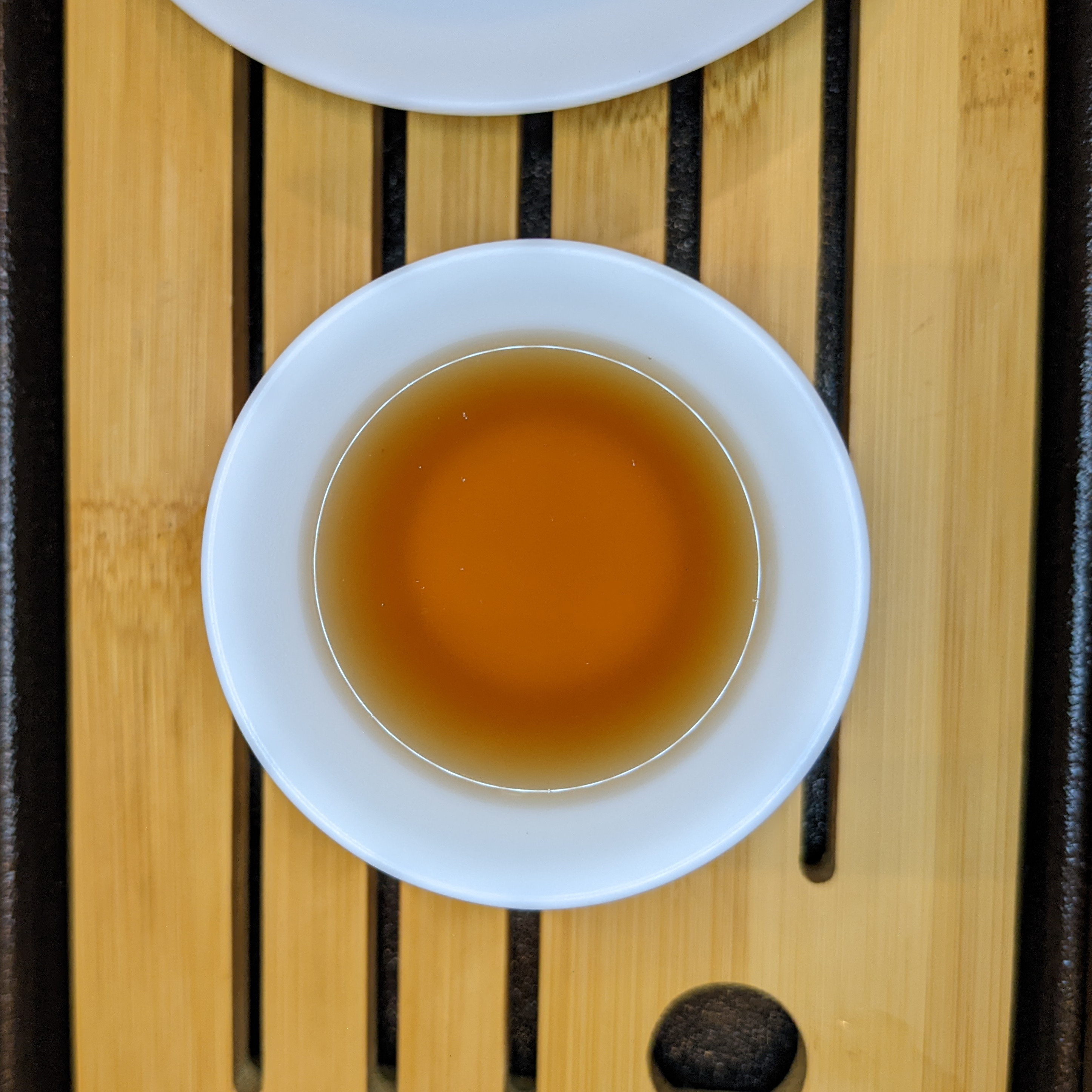
I did not drink the wash - as I mentioned earlier, I typically don’t drink the wash for the smokier lapsang-like teas because it can ruin the experience. The wash removes some harshness, and a lot of the smokiness. It looked very thick and smooth, and could have had a decent taste; however, I’ve been disappointed by washes in the past, and figured it was worth waiting for the first true infusion.
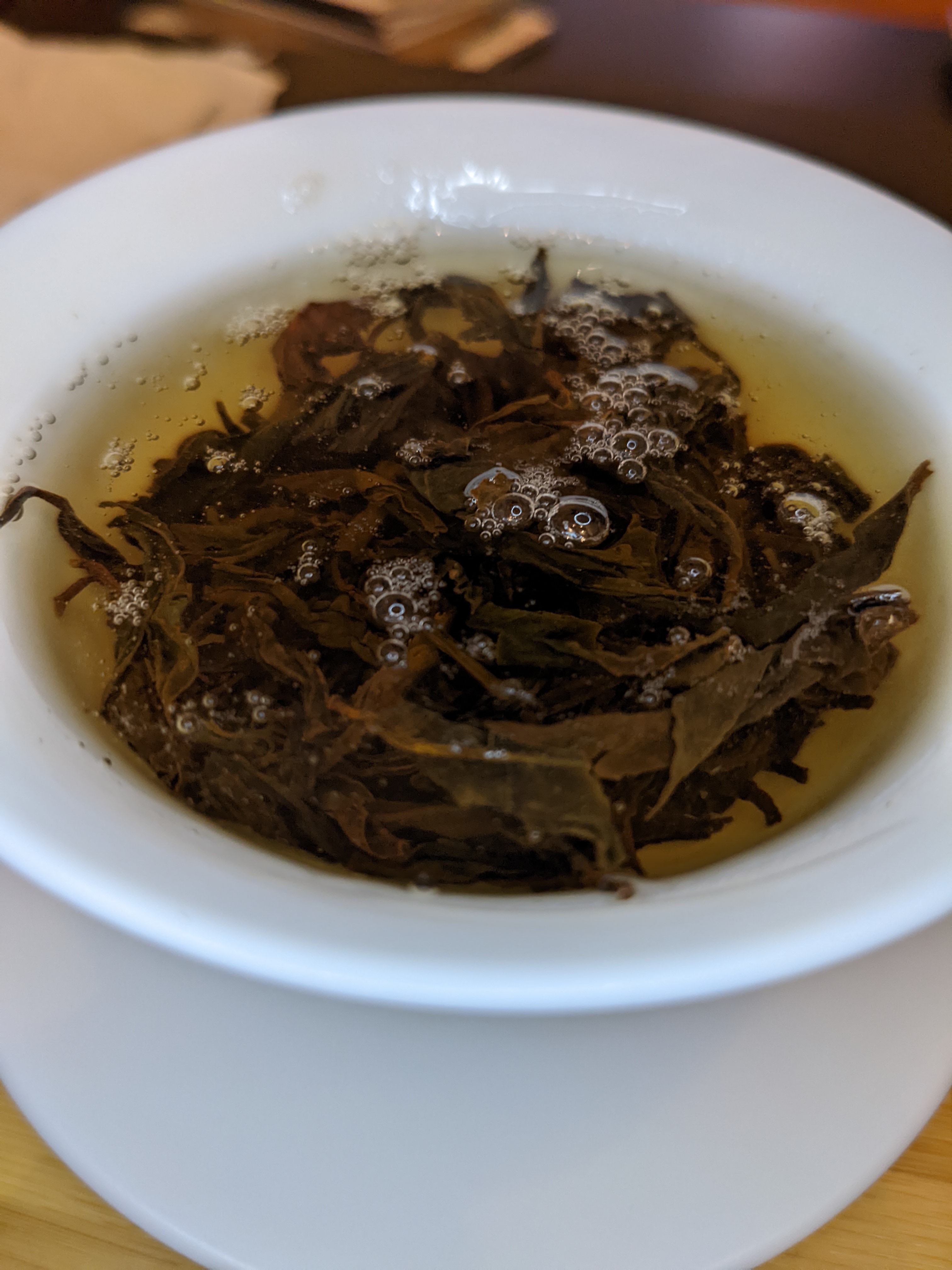
The wet leaf smelled a lot more like pear or peach than it did on the wash. The fruitiness came out much more in this infusion, and any smoke scent had basically disappeared. The color of the leaf also changed. The browns came out a lot more, even though leaf did not open much more than it did from the initial wash. The liquor was a bit more red than the the initial golden liquor from the wash. It does not quite show in the pictures, but it was a very deep golden red. The liquid still had the same thick and smooth appearance of the wash, but did not stick to the gaiwan in the same way.
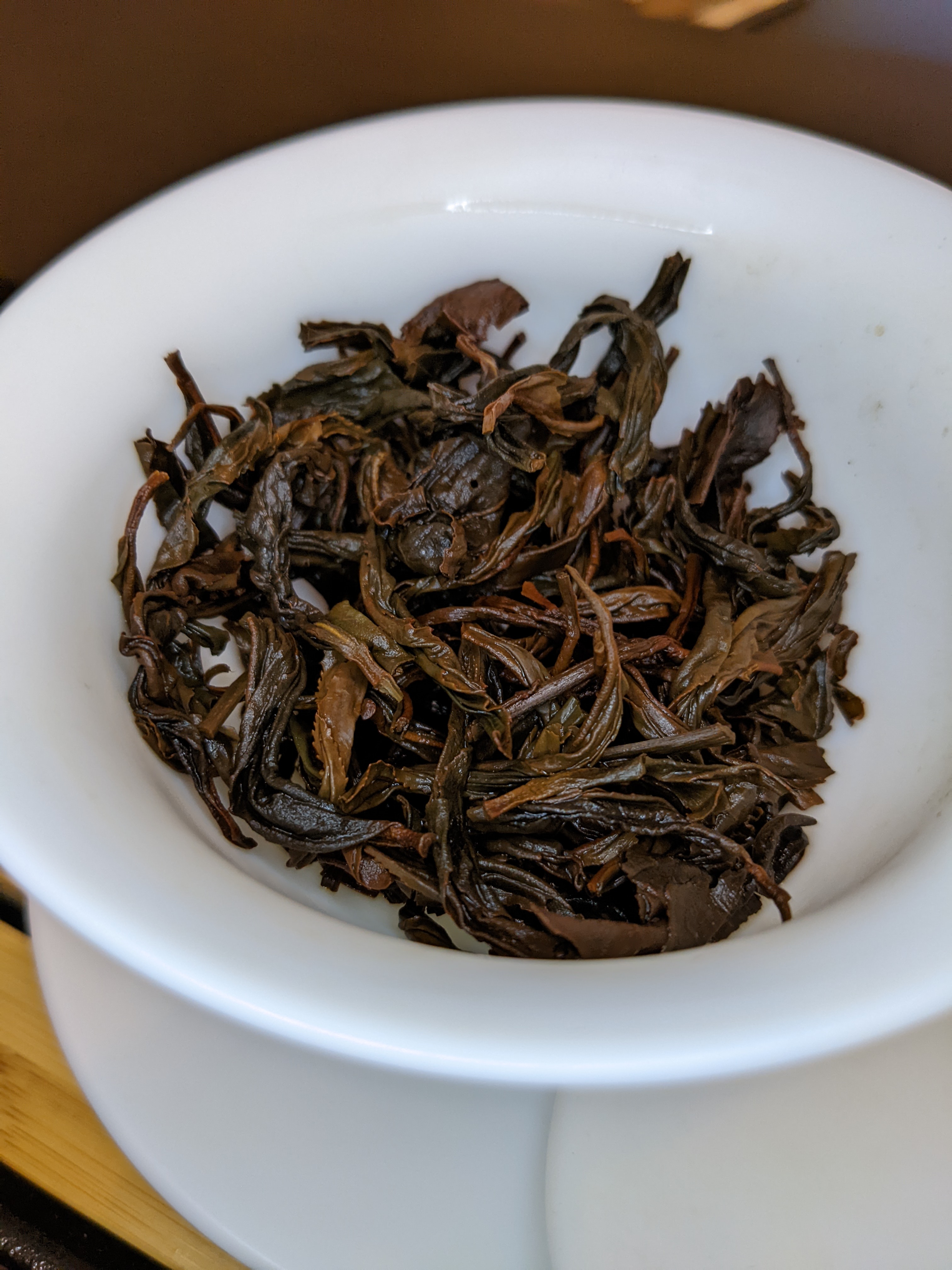
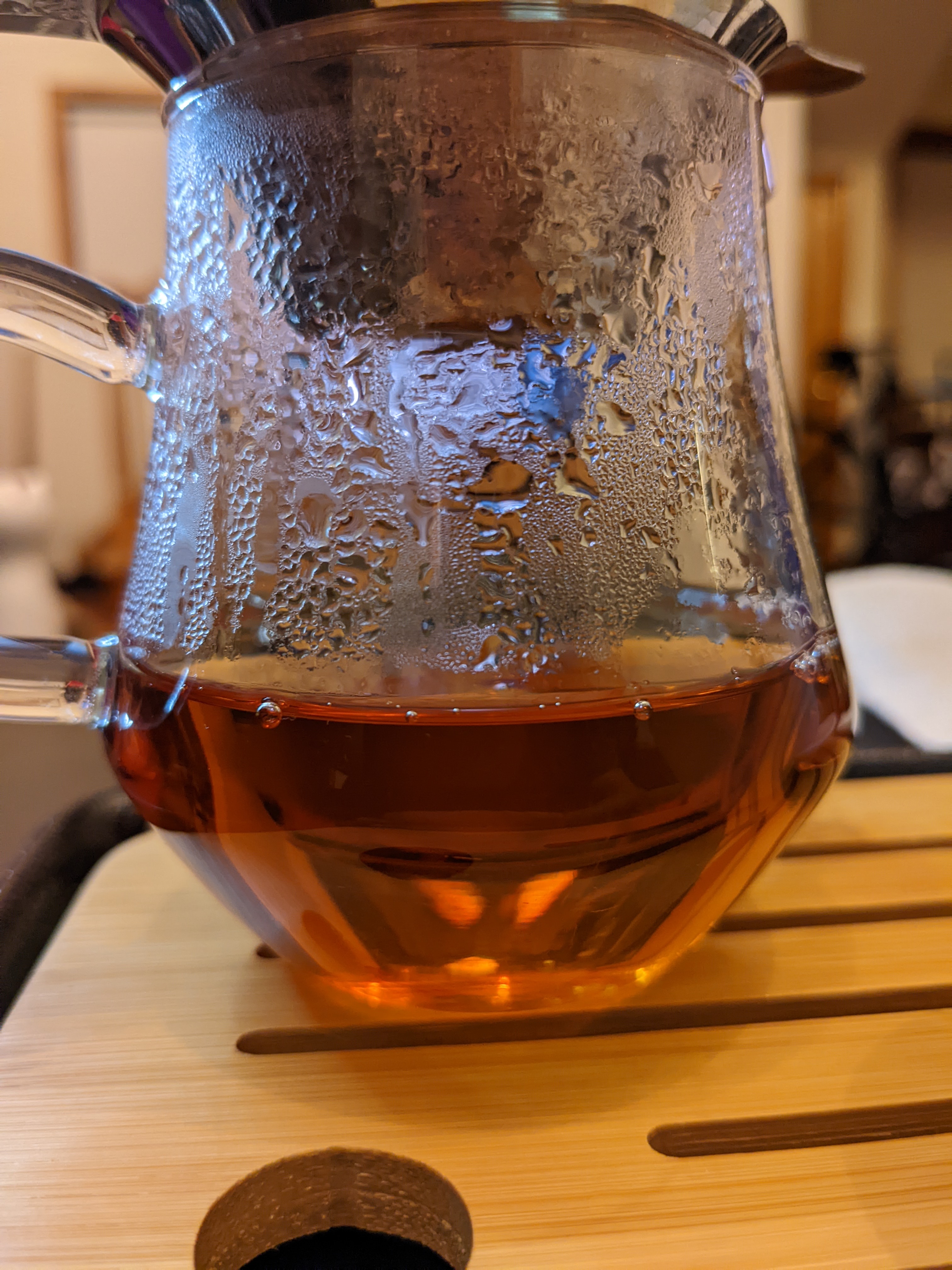
The taste was very clean, with a light but slightly creamy mouthfeel. Similar to the scent, the taste was slightly fruity and a bit floral; but not nearly as fruity as it smelled. It definitely was closer to a pear flavor, and a slight citrus flavor; but a bit lighter than I expected given the scent. No smokiness at all, which was also a bit surprising. If anything, I could maybe taste the floral/vegetal notes from the smoke, but it was extremely subtle.. maybe made up while searching for the smokey flavor!

The liquor leaves a smooth mouthfeel after drinking, with some roundness as the tea sticks to the inside of your mouth. There’s maybe a touch of astringency and tightness to the tip of your tongue as it finishes, but its an overall pleasant aftertaste. I was extremely surprised at how mild this first infusion turned out. I went in expecting smoke and strong flavors until the tea unfurled, but was met with nice fruity flavors.
The second infusion was the same color and flavor overall, but I could smell the wet leaf opening up, with maybe a slightly fruitier scent. Later infusions smelled maybe a bit closer to peach than pear; but still very pear-like… if that makes sense. By the third infusion, the liquor started to seem a bit lighter in color. The scent of wet leaf was about the same, but leaves really started to open. The shapes and colors of the leaves started to really show, and the leaves really started to absorb more of the liquid. You could start to see more of the shapes, veins, and stems as the greens started to pop show in the unfurled leaves.
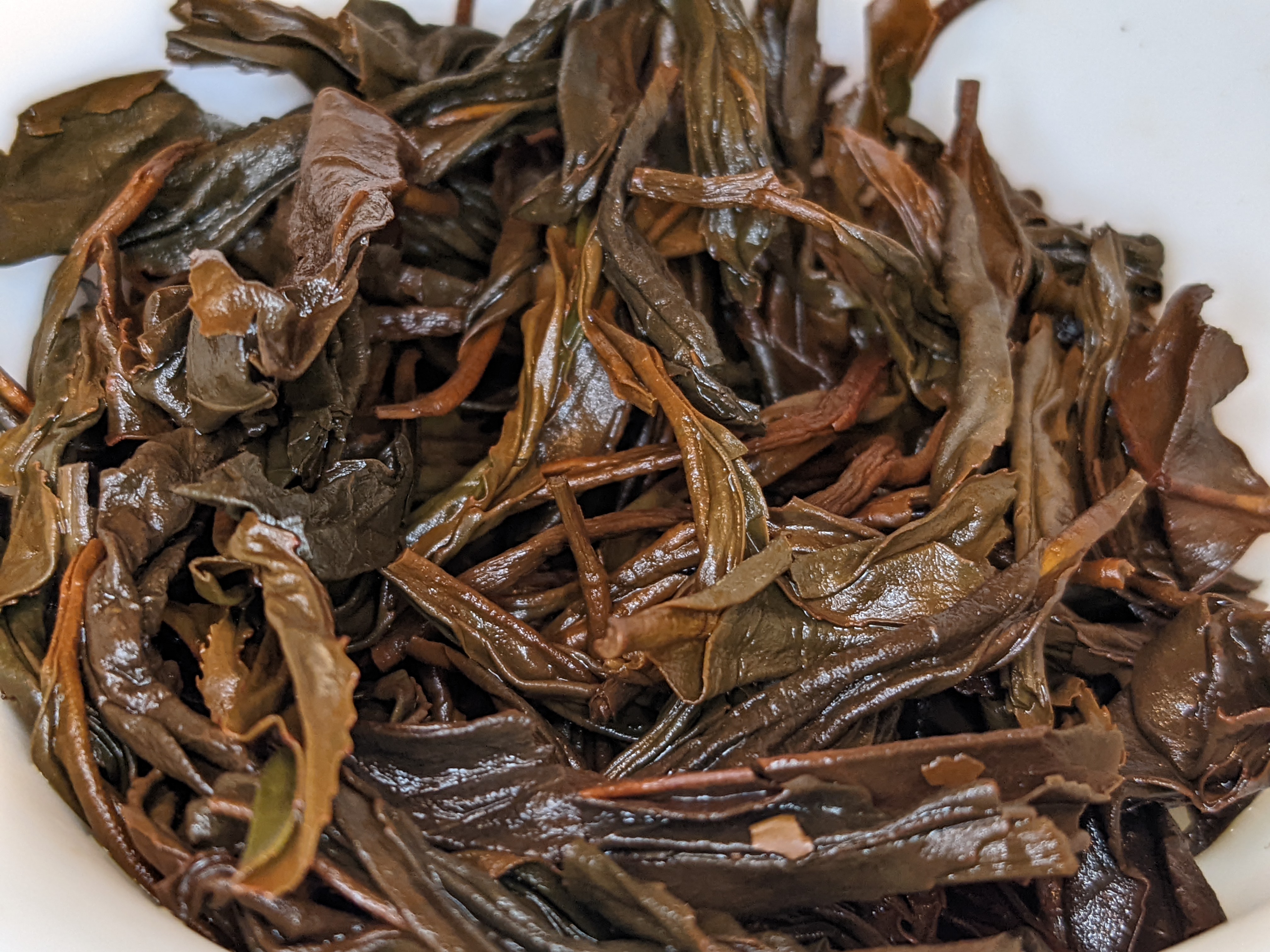
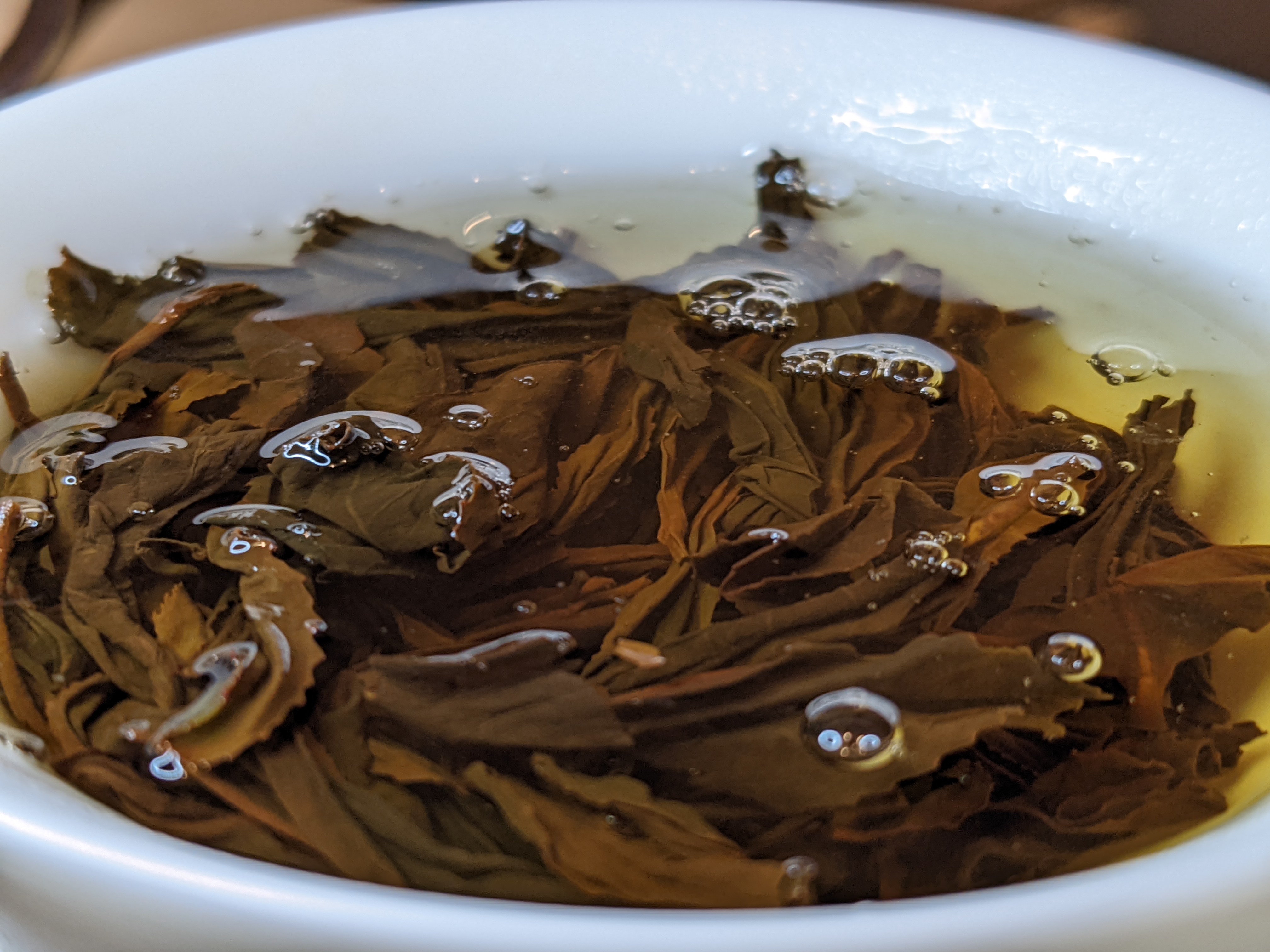
The later infusions had a much lighter sweetness to them. The notes of pear were still there, but not hitting you in the face like they did in the first couple infusions. The mouthfeel obviously lightened up as well; but there was still a slightly smooth, creaminess to it that lasted though even some of the very late infusions. I kept steeping until most of the flavor had dissipated, and moved to 45 second infusions by the end.

This was a really great tea, and I think the typical lapsang souchong style that people often talk about. I had been burned by cheap and overly smokey lapsang souchongs in the past, which made me go into this review with low expectations. I was pleasantly surprised with the flavor and will likely try some more teas like this going forward.
To speak directly to Wuyi Origin’s tea, it seems like a very nice tea. I don’t have enough experience with this style to compare “Wild” teas to a typical farm-grown tea; but if I venture into this style more, I may make a follow up post to compare and explain the differences. To anyone wondering if they should try this out, I’d say it is worth the purchase.